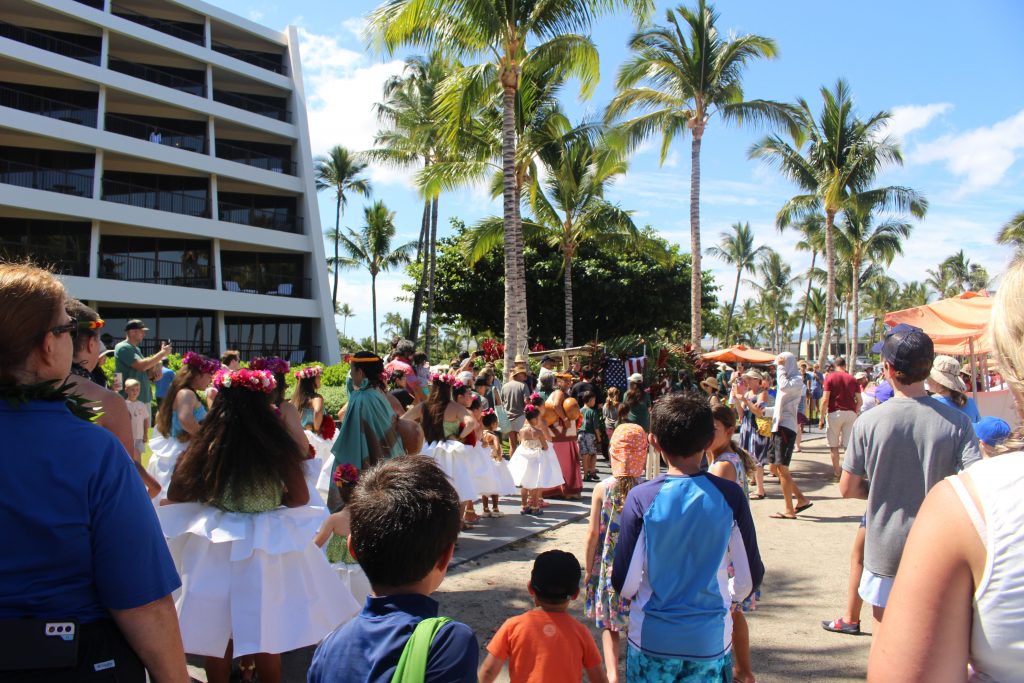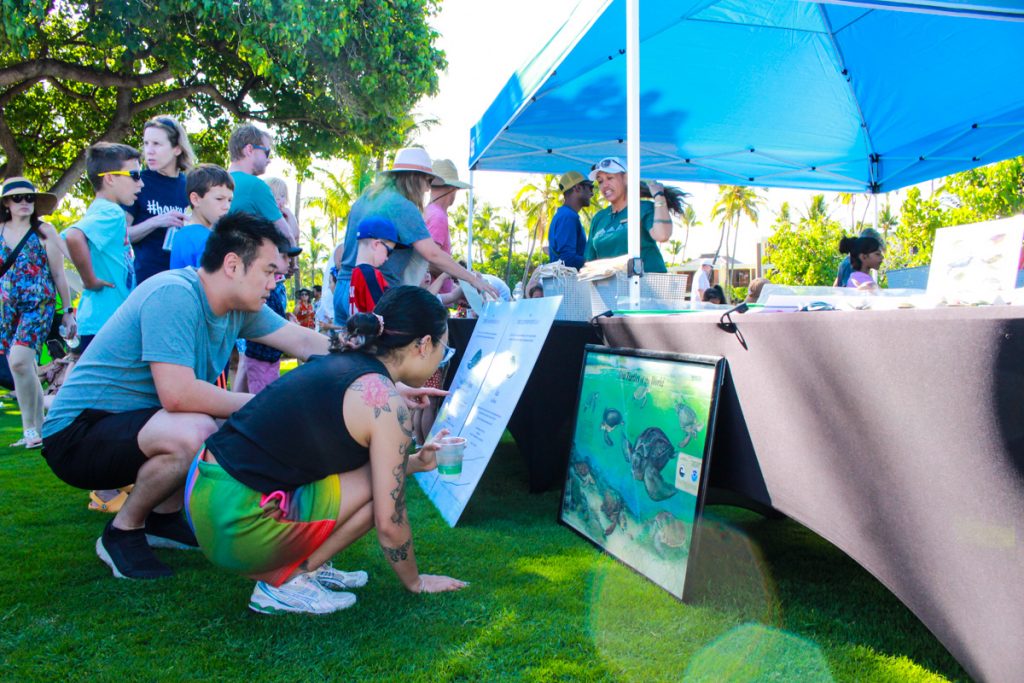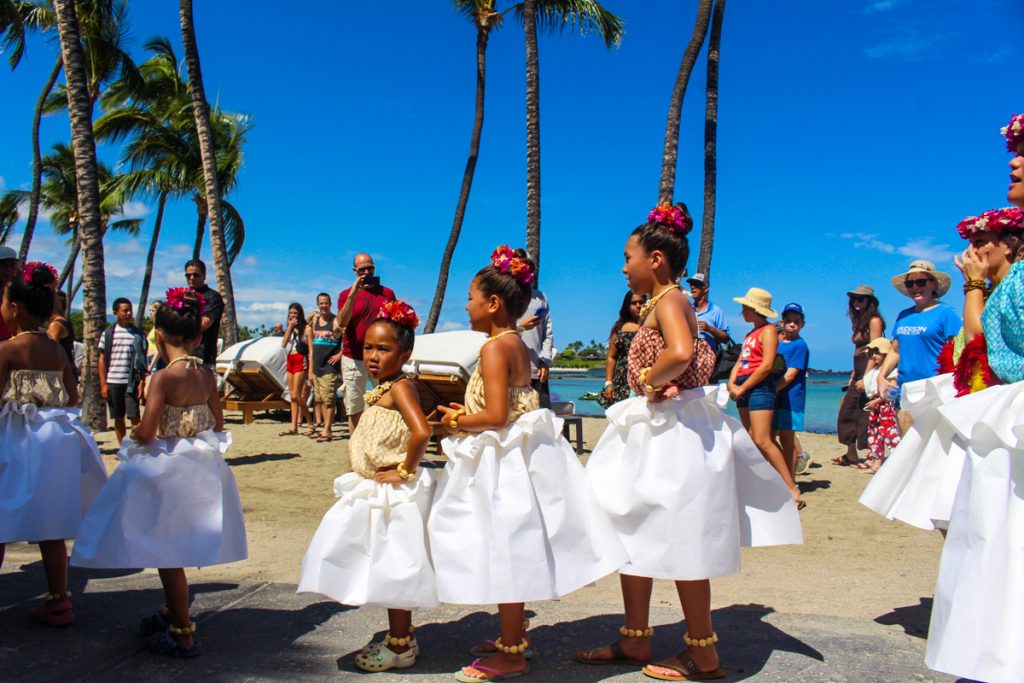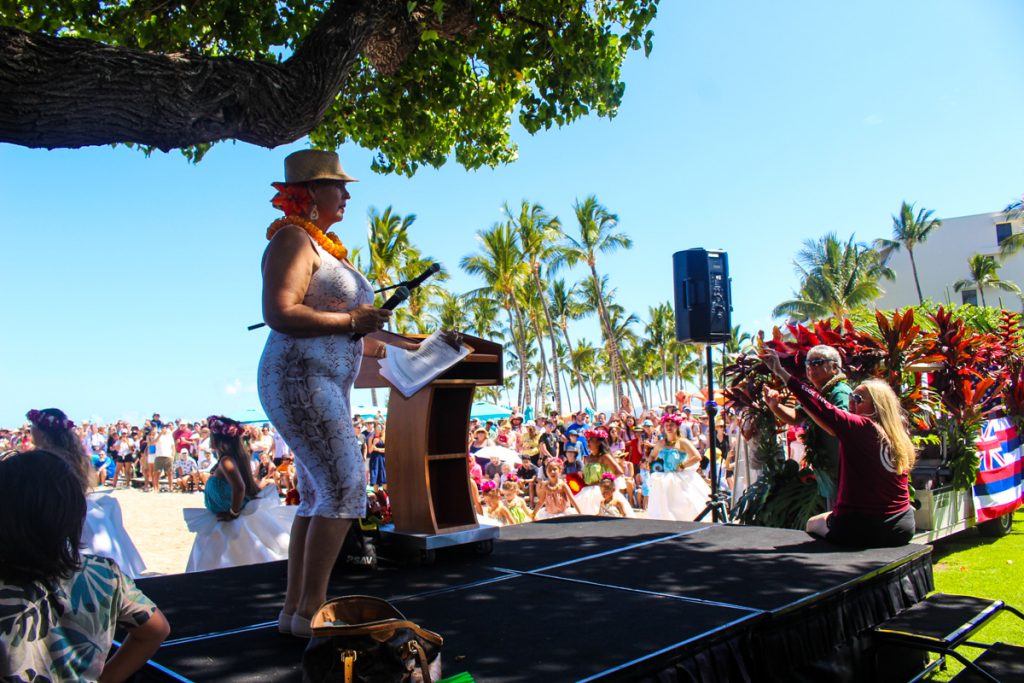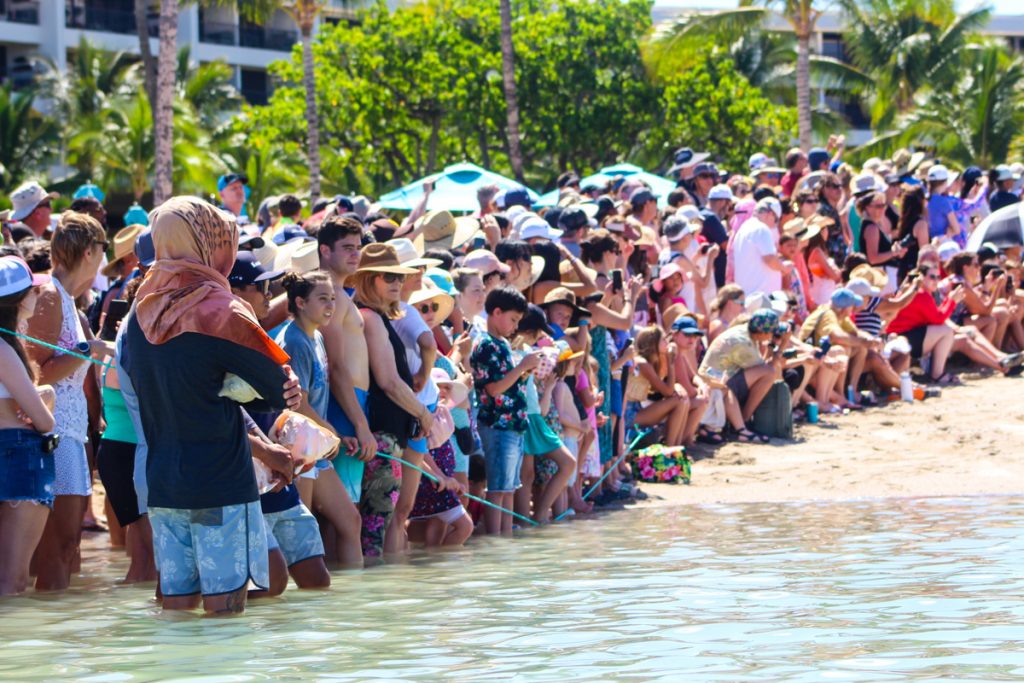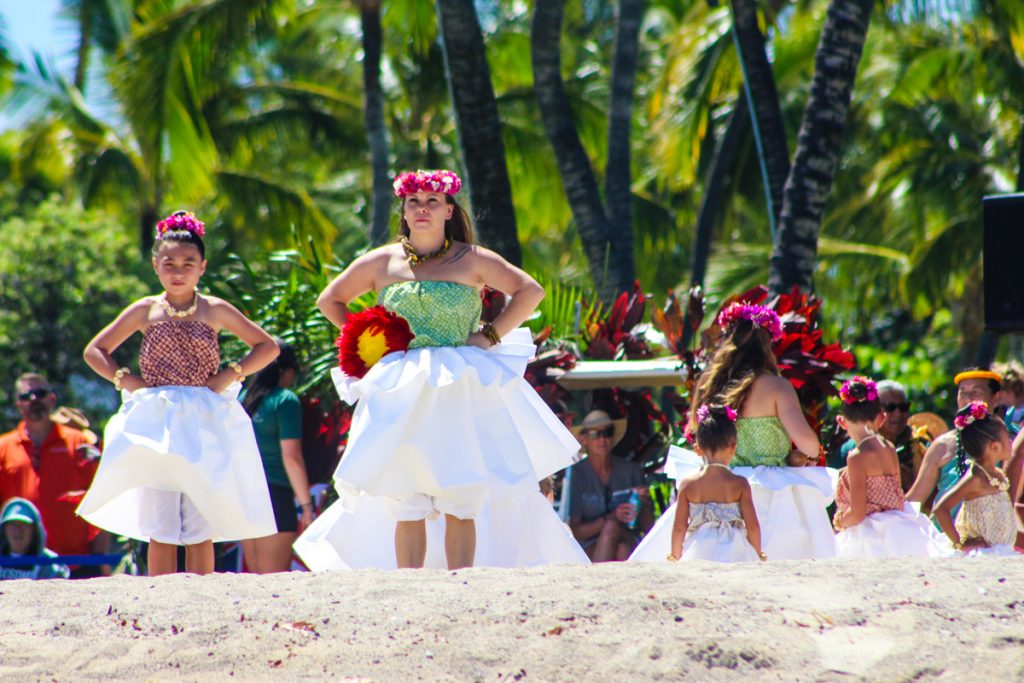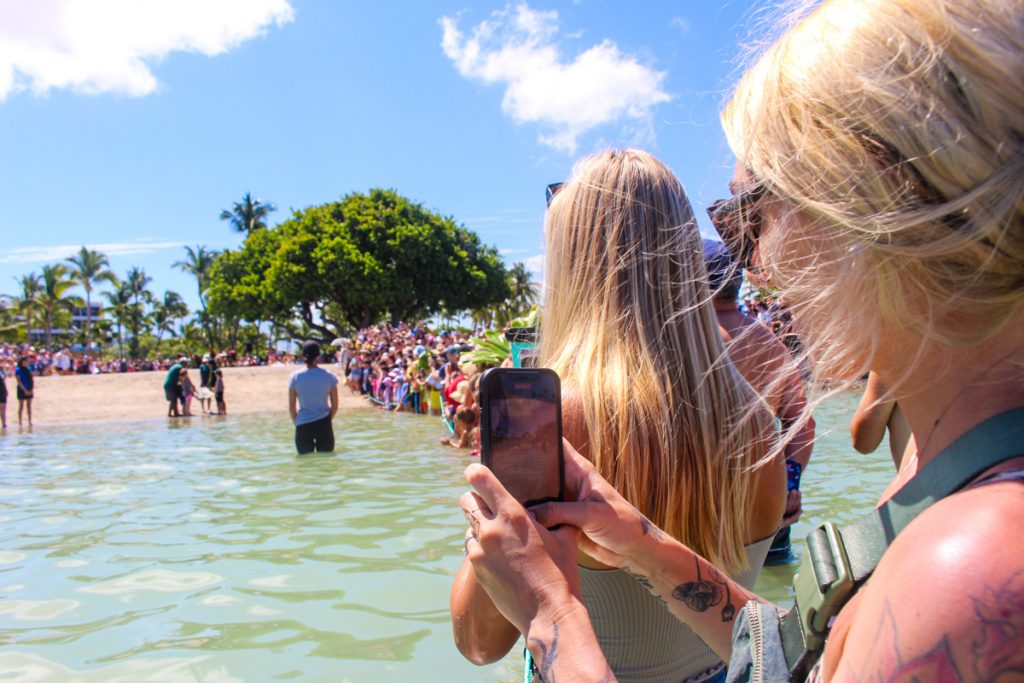34th Turtle Independence Day in West Hawaiʻi: 2 endangered honu released into sea
On the Fourth of July, Seattle native Gabby Rivelo stood waist-deep in water with hundreds of others to take pictures of two endangered green sea turtles being released into the Pacific for hopefully a good long life.
It was the 34th annual Turtle Independence Day at Mauna Lani Auberge Resort along the Kohala Coast in West Hawai’i.
“It’s definitely a bigger commotion than I expected,” Rivelo said. “There’s probably 300-500 people here today. It’s a ton of people.”
The turtles, given the names Kua and Melekai Neinei o Nāpali on the day of release, began as captive-bred hatchling at Sea Life Park on O’ahu.
The marine park gave the hatchlings to Mauna Lani to raise at its Honu (turtle) Lagoon. The sea creatures are nurtured until they’re ready to go out into the big ocean on their own, at about 3 years old.

It’s part of the Mālama Honu, Mālama Honua program, which started in 1989 and creates awareness for endangered green sea turtles through education, conservation and community.
The first Turtle Independence Day was held July 4, 1990, when four captive-bred and pond-reared honu were released at the Mauna Lani’s shoreline by just a couple of people.
Pi‘i La’eha, the natural resource manager at Mauna Lani, has been with the program for 23 years. He said the event provides people with a better understanding of the sea turtles.
“We’ve always known culturally that turtles are very important,” he said. “Not only to Hawaiians but to people all over the world.

“The back of the shell is representative of our world. Hawaiians lived in a spirit world and a physical world. When our family members would enter to the spirit world they would return back here not only to guide us but to protect us here – an Aumakua.”
On Tuesday, he released the two turtles while guests watched from afar. These turtles weren’t given names while being raised as part of the educational aspect of not treating them as pets.
They do have numbers and tags, he said, and all get names on the day they’re released as part of the culture.
“Public awareness is so huge,” he said. “Turtles have been around for so long before there were dinosaurs. Today we talk about suitability and resilience, what better animal to look at than the turtles? They survived the dinosaur age, ice age…”
Ethan Souza, who works alongside La’eha as the natural resources assistant manager at Mauna Lani, said he grew up in Waimea and remembers going to Turtle Independence Day as a kid. Now he gets to be apart of the effort and watch the animals be released into the wild. It helps the species’ chances of survival.
He said the best case scenario in the wild is that only one in every 1,000 hatchlings survives into adulthood.
And while that is part of nature, the turtles need help because of non-nature reasons.
“When a species is endangered … because of human activity, we kind of want to do something about that,” he said. “We can’t negatively impact a species without positively impacting them as well.”
Since they are released into the ocean when they’re older, he said the program helps their odds.
“Those things that would have munched on a hatchling won’t even try for a juvenile this size. So we see an exponentially higher survival rate,” he said.
The Mauna Lani has worked with the park’s green sea turtle breeding program since 1989. The Mauna Lani funds the Mālama Honu, Mālama Honua Program with support from Sea Life Park. It operates with two full-time marine biologists, including Laeha and Sousa, as well as a network of veterinarians, consultants and educators.
Green sea turtles are ancient and have lived on Earth for 150 million years. The turtle’s population has been increasing since federal protections were placed in the 1970s, but to this day they are still classified as threatened under state and federal laws.
Over the past 34 years, the Mālama Honu, Mālama Honua Program has reared and released more than 200 green sea turtles to help further bolster the population. They released six turtles the previous time, La’eha said.
Danny Jr. Akaka, cultural ambassador and historian at Mauna Lani, led the ceremony. Representatives from Kainalu Ocean Sports also were there.
For more information visit this website.
*Editor’s note Information in this article has been updated to ensure accuracy.
Sponsored Content
Comments




